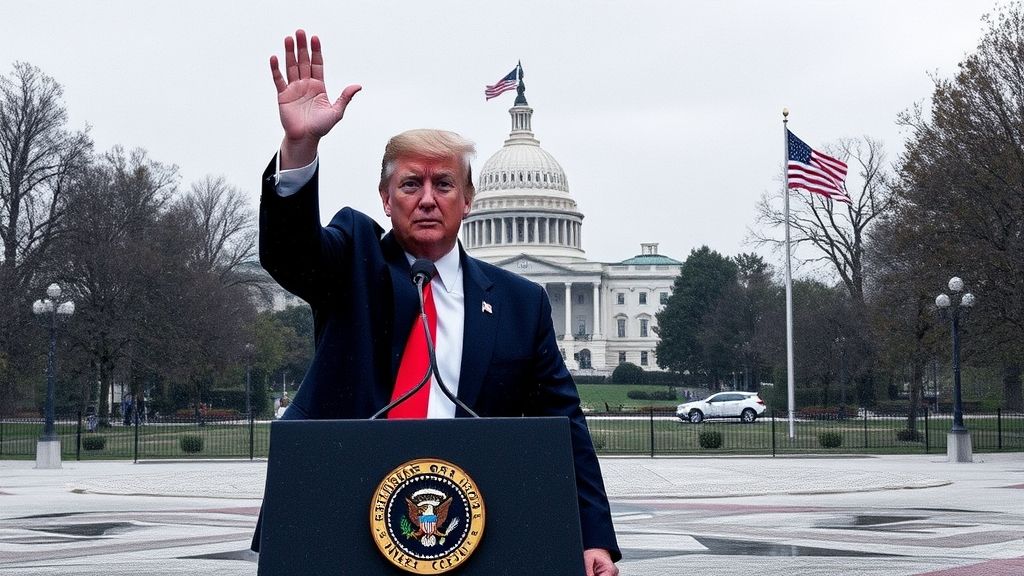The United States government has a recurring pattern of shutdowns, periods where non-essential federal operations halt due to a failure of Congress to pass appropriations bills. The most recent government shutdown, which concluded in early 2019, set a grim record by becoming the longest in over four decades, stretching for an agonizing 35 days. This extended hiatus had significant ripple effects across the nation, impacting federal employees, contractors, and the services the public relies upon. Understanding the history and implications of these shutdowns is crucial for citizens and policymakers alike.
The Anatomy of a Government Shutdown: Why Does It Happen?
At its core, a government shutdown occurs when Congress ca
ot agree on and pass the necessary legislation to fund federal agencies and their operations. The U.S. Constitution mandates that Congress “shall have Power…To make all Laws which shall be necessary and proper for carrying into Execution the foregoing Powers.” Funding government operations falls under this purview. Each year, Congress is tasked with creating and approving appropriations bills for various government departments. If these bills, or a continuing resolution (a temporary funding measure), are not enacted by the start of the fiscal year (October 1st), then non-essential government functions must cease.
The reasons for these impasses are varied and often deeply rooted in political disagreements. Frequently, these shutdowns become leverage points in broader policy debates. For instance, the 2018-2019 shutdown was largely precipitated by a dispute over funding for a wall along the U.S.-Mexico border. Other common sticking points include disagreements over spending levels, social policies, or the national debt. These partisan battles, while often framed as principled stands, can have tangible and detrimental consequences.
A Chronology of Recent Shutdowns: A Look at the Data
To truly grasp the gravity of the situation, examining the recent history of government shutdowns provides invaluable context. While occasional short-lived lapses in funding have occurred, the trend toward longer and more impactful shutdowns has become increasingly apparent.
Here’s a look at some of the more significant recent shutdowns and their durations:
December 2018 – January 2019: This was the record-breaking shutdown, lasting 35 days. The primary catalyst was the disagreement over funding for the border wall. This shutdown affected approximately 800,000 federal employees who were furloughed or forced to work without pay.
October 2013: A 16-day shutdown occurred, driven by disputes over the Affordable Care Act and budget cuts. This shutdown saw hundreds of thousands of federal workers furloughed.
November 1995 – January 1996: This period saw two distinct shutdowns, one lasting 5 days and the subsequent one for 21 days. These were largely fueled by disagreements between the Clinton administration and the Republican-controlled Congress over spending and Medicare.
These examples illustrate a pattern of escalating political brinkmanship with prolonged consequences. Each shutdown, regardless of its length, has a domino effect on the economy and the daily lives of Americans.
The Far-Reaching Impacts of Shutdowns
The repercussions of a government shutdown extend far beyond the immediate inconvenience of federal agencies temporarily ceasing operations.
Federal Employees and Contractors: The most direct impact is on the livelihoods of federal employees, many of whom are furloughed without pay. While back pay is often eventually approved, the financial strain and uncertainty can be immense. Federal contractors also suffer, as their work often halts, leading to layoffs and lost revenue.
Public Services: Essential services are often curtailed. National parks may close, limiting recreational opportunities and impacting local economies that depend on tourism. Visa and passport processing can be delayed, affecting international travel and business. The IRS may scale back tax assistance. Even critical functions like food safety inspections or air traffic control can be impacted, though efforts are usually made to maintain core safety operations.
Economic Uncertainty: Shutdowns create economic uncertainty, which can dampen consumer confidence and business investment. The lost wages of federal workers and the disruption to government contracts can have a tangible negative effect on GDP. For example, Moody’s Analytics estimated that the 2018-2019 shutdown reduced economic growth by 0.1% in the fourth quarter of 2018 and by 0.2% in the first quarter of 2019.
Navigating the Shutdown Landscape: Actionable Insights
While individual citizens have limited direct control over government shutdowns, there are steps one can take to mitigate their personal impact and advocate for better governance.
For Federal Employees:
Build an Emergency Fund: Having a financial cushion is paramount. Aim to save at least 3-6 months of living expenses.
Understand Your Rights: Familiarize yourself with agency policies regarding furloughs and back pay.
Explore Contingent Employment: Consider opportunities for temporary work if your federal position is significantly impacted.
For Small Businesses and Contractors:
Diversify Clientele: Reduce reliance on government contracts if possible.
Maintain Cash Reserves: Similar to individuals, businesses need financial buffers to weather income disruptions.
Stay Informed: Monitor news and official communications for updates on government operations and potential relief measures.
For All Citizens:
Engage with Your Representatives: Contact your elected officials to voice your concerns about government shutdowns and advocate for fiscal responsibility and timely appropriations.
Support Organizations: Consider supporting non-profits that rely on or are impacted by government funding, or those advocating for policy solutions.
Stay Informed: Follow reputable news sources to understand the issues at play and their potential consequences.
Conclusion: A Call for Pragmatism
The record-breaking government shutdown of 2018-2019 served as a stark reminder of the fragility of federal operations when political will falters. The prolonged period of uncertainty and financial hardship for hundreds of thousands of Americans underscores the need for more stable and predictable governance. Moving forward, it is imperative that lawmakers prioritize finding common ground and enacting responsible appropriations bills to ensure the continued functioning of government and the delivery of essential services. The economic and social costs of these recurring impasses are simply too high to ignore. By understanding the history, consequences, and potential solutions, citizens can better engage in the democratic process and advocate for a more resilient and functional government.



